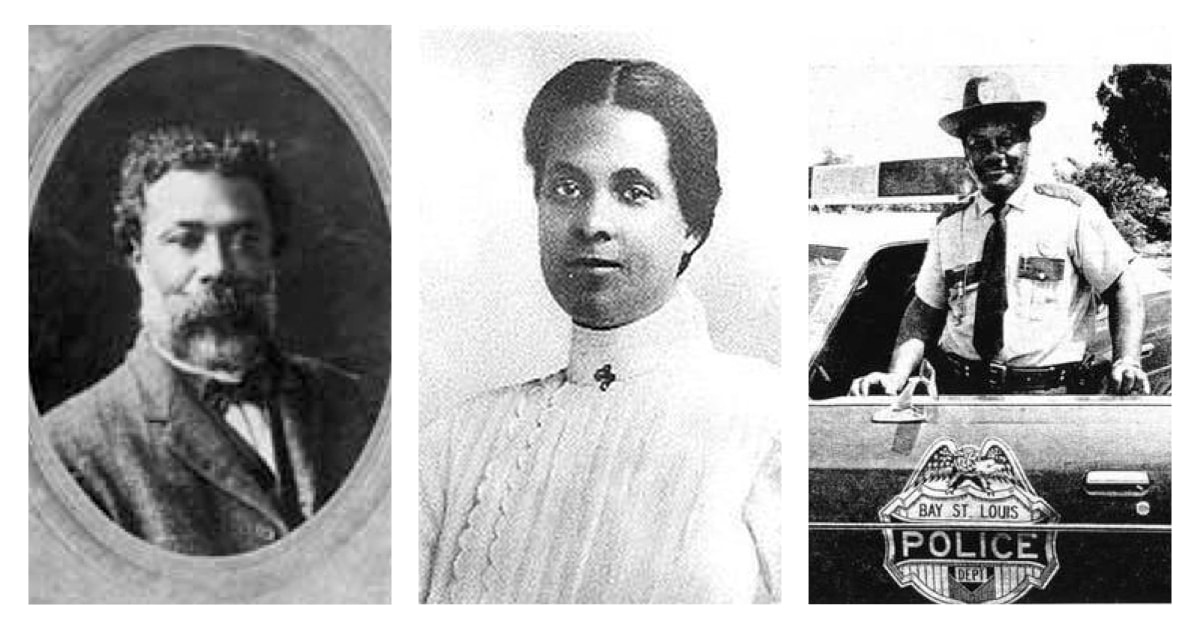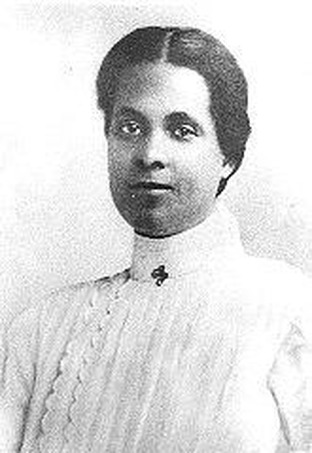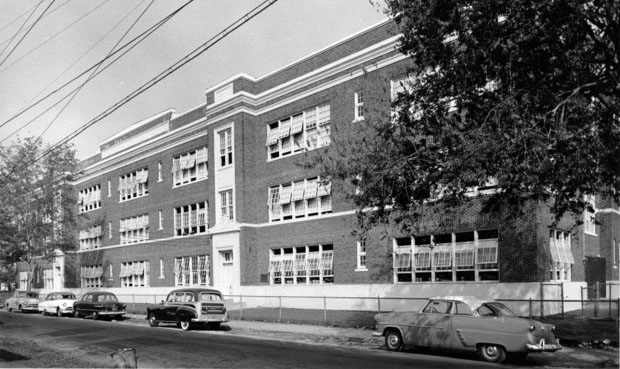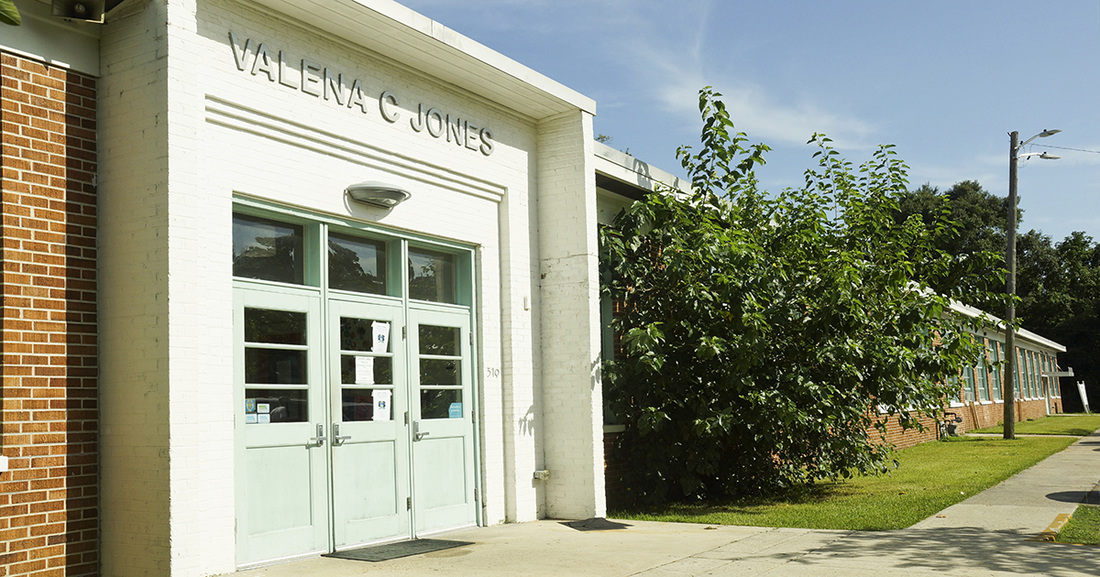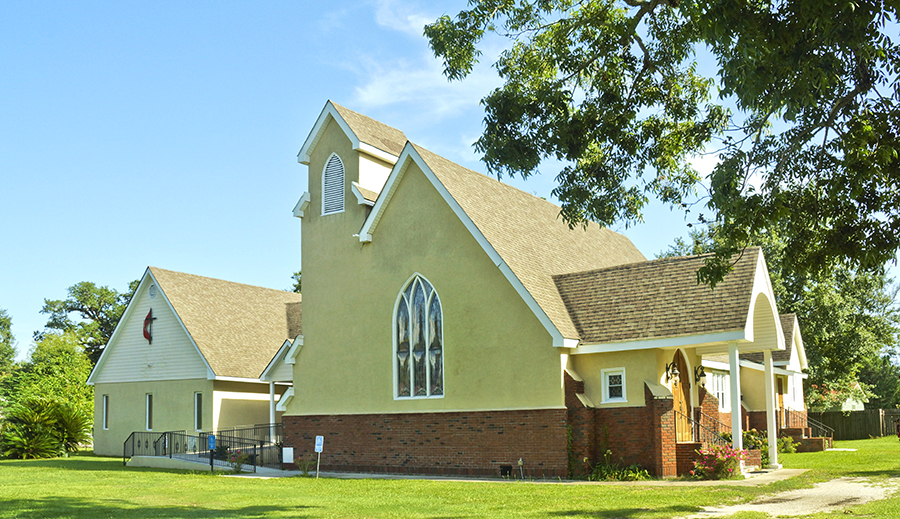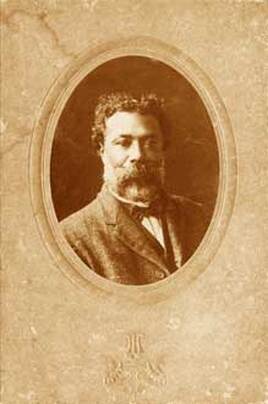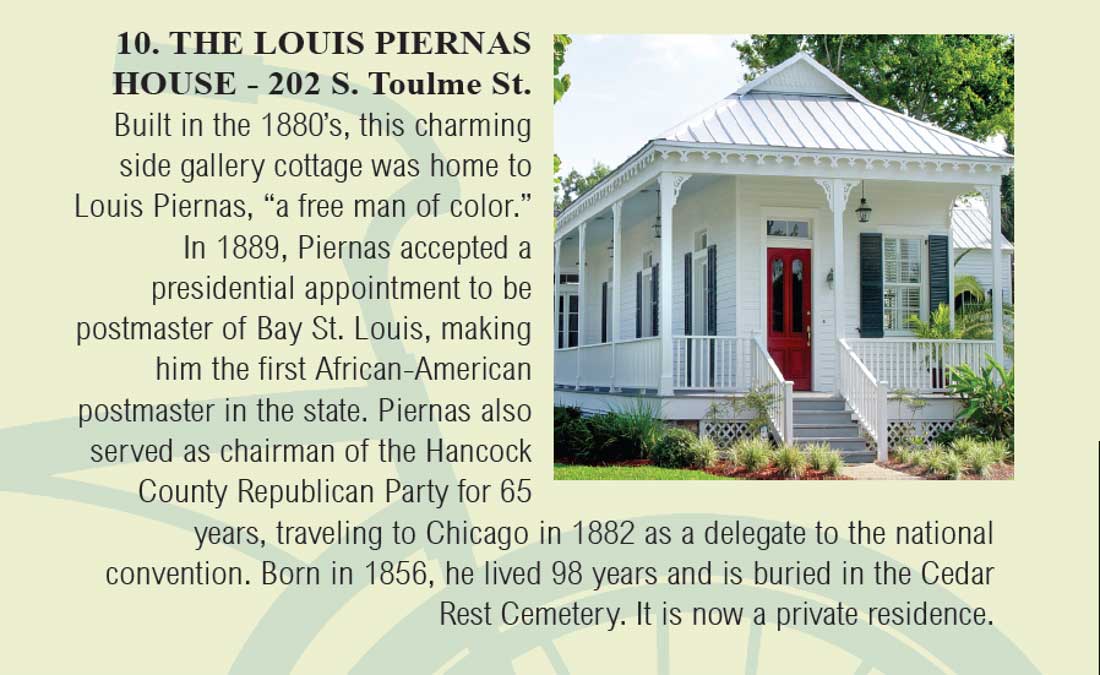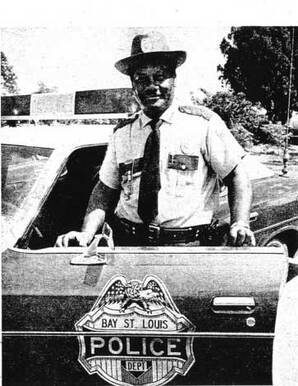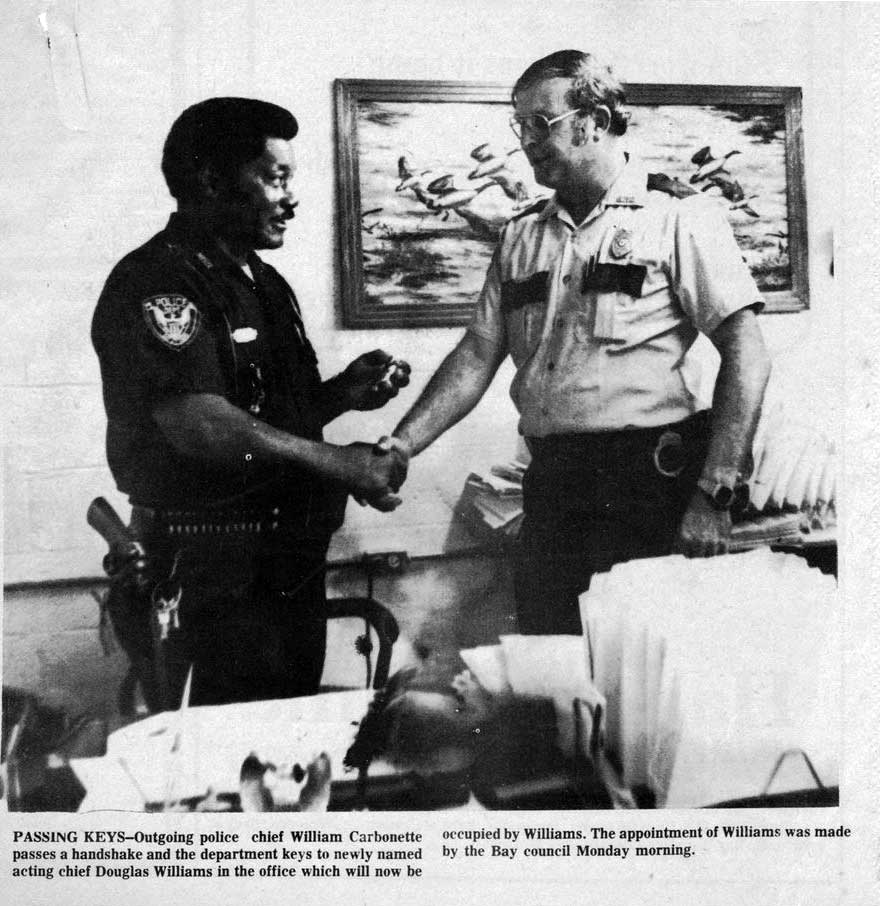In honor of Black History Month, the author looks back at three BSL residents whose character and service helped shape our community.
- Story by Jerry Beaugez (originally published in February, 2020)
History is often reduced to a handful of memorable moments and events. The origins of Black History Month began in the early 1900s with the desire of historian Carter G. Woodson to spotlight the accomplishments of African-Americans. It wasn’t until 1978 when President Jimmy Carter officially recognized the month of February as Black History Month.
In black history, notable events often include courageous stories like those of Harriet Tubman, Rosa Parks and historic moments like the famous “I Have a Dream” speech by Dr. Martin Luther King, Jr. But what about the local pioneers that helped shape Bay St. Louis in its early days?
In this month’s Shared History column, we will showcase the contributions of Valena C. Jones, Louis Piernas and Douglas Williams. If you live in the Bay, you probably recognize these names, but you may not know who they were. Valena Cecilia MacArthur Jones
After her marriage Mrs. Jones no longer taught school, but she remained actively involved with the education of African-American youth. In 1917, the year of her death, a public school in New Orleans was named and dedicated to Jones.
Here in Bay St. Louis, the Valena C. Jones United Methodist Church can be found on Sycamore Street. The Valena C. Jones School was established in the early 1900s honoring her work and dedication. The original school was destroyed during the Hurricane of 1947 but was rebuilt and became a hub for the black community. The school, located at 310 Old Spanish Trail, remained in operation until 1972 after the desegregation of schools in 1969 began to bring students of all races together. From 1972 until 2005, the City of Bay St. Louis used the facility for senior citizen activities, as well as the home of City’s fire, police and public works departments. After receiving damage in 2005 from Hurricane Katrina, city departments were moved, and the Valena C. Jones School gained new life with children filling its halls once again. The multi-million dollar restoration project funded by the Mississippi Development Authority and Community Block Grant funds gave birth to the Boys & Girls Club, which is now housed at this location. Louis J. Piernas
Held in high esteem by whites and people of color alike, Mr. Piernas held several offices during his lifetime. He served on the Bay St. Louis School Board, was secretary and auditor of Bay St. Louis, and was elected as Hancock County Supervisor of Beat 5 - defeating some prominent white candidates of the time.
Piernas was appointed Bay St. Louis postmaster, becoming the first black postmaster in the state. He served under the administrations of Presidents Benjamin Harrison, William McKinley and Theodore Roosevelt. His longest position was that of chairman of the Republican Party of Hancock County which he held for over 60 years. At the time of his death in 1954 at the age of 98, Piernas was the oldest living Bay St. Louis resident. He and his wife, Marie Louise Barabino, did not have children of their own but had many nieces and nephews from the four original Bayou families, the Labat, Prudeaux, Barabino and Piernas families. A street just off of the Old Spanish Trail is named in honor of Piernas and his home, which was built in 1880, is located at the corner of St. John and South Toulme Streets. Mr. Piernas is buried at the Cedar Rest Cemetery. Douglas J. Williams
Mayor Carver would later recount the story of being stopped by Williams for running a stop sign late one night while on his way home. He said he did a “rolling stop,” and Williams pulled him over. After the two spoke, Williams told the mayor he would have to write him a ticket, to which Carver told him to go ahead because he was in the wrong.
Carver paid the fine for the ticket and stated, “If Williams was not afraid to give the mayor a ticket, I know he’ll enforce the laws to the best of his ability and won’t give any special favors.” Williams rose through the ranks and was appointed as assistant chief of police in 1972, and he was named chief of police in 1976 by Mayor Carver and unanimously approved by the City Council. In early 1977 he would be reappointed by Mayor Larry Bennett and hold that position until his retirement due to health issues in 1984. Chief Williams is believed to be one of the earliest African-Americans in Mississippi to rise to the top law enforcement position in a predominantly white community and the first here in Bay St. Louis. He had the respect of young and old, black and white because of his integrity and how he treated others. He said he remembered his mother, Rosine, telling him, “Don’t let nobody be nicer to you than you are to them. Treat people the way you want to be treated.” Although Chief Williams passed away in 1985, his name and legacy live on. In 2009 the city named and dedicated the police department to him and just a few years ago, Sycamore Street where Williams lived and raised his family was given a memorial status. The history of Bay St. Louis is long and deep, with many more people who have made impacts here. As a community, it is our duty to learn from them and preserve their memory. You never know what you’ll find when looking “back in the day” here in the Bay. Enjoy this feature?Comments are closed.
|
Archives
February 2024
Categories
All
|
Shoofly Magazine Partners
Our Shoofly Partners are local businesses and organizations who share our mission to enrich community life in Bay St. Louis, Waveland, Diamondhead and Pass Christian. These are limited in number to maximize visibility. Email us now to become a Shoofly Partner!

